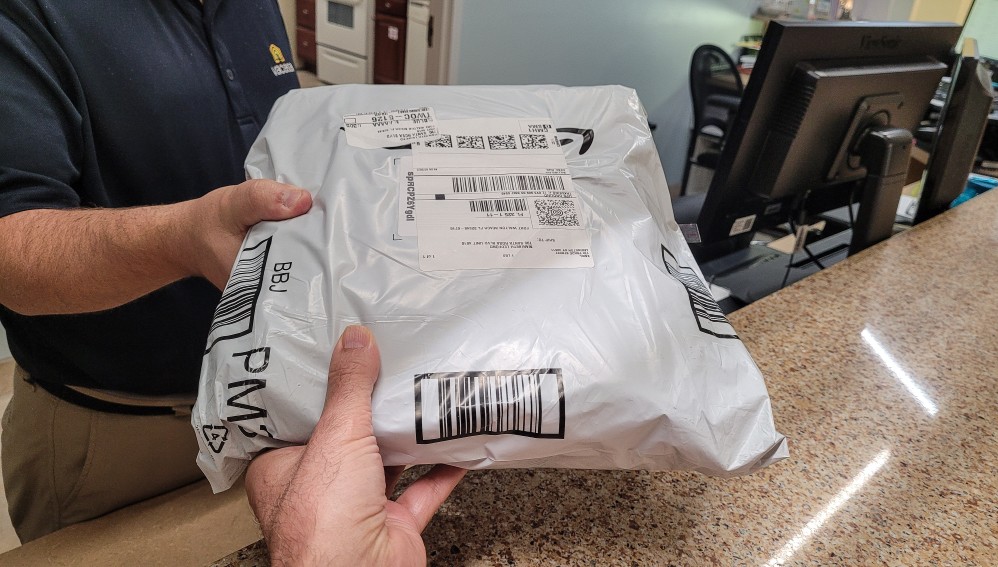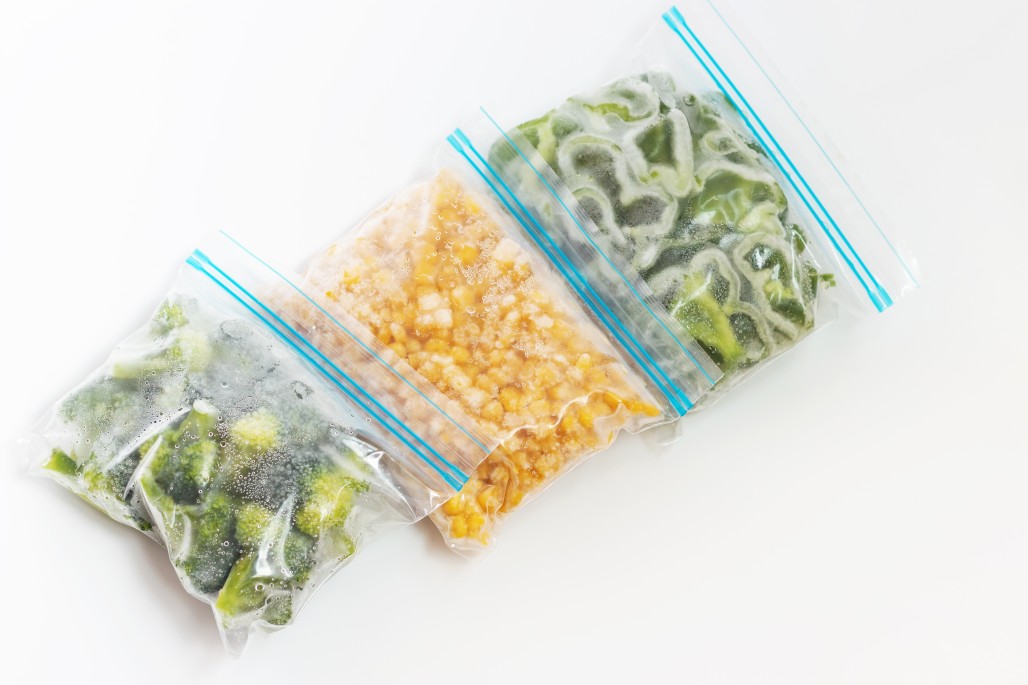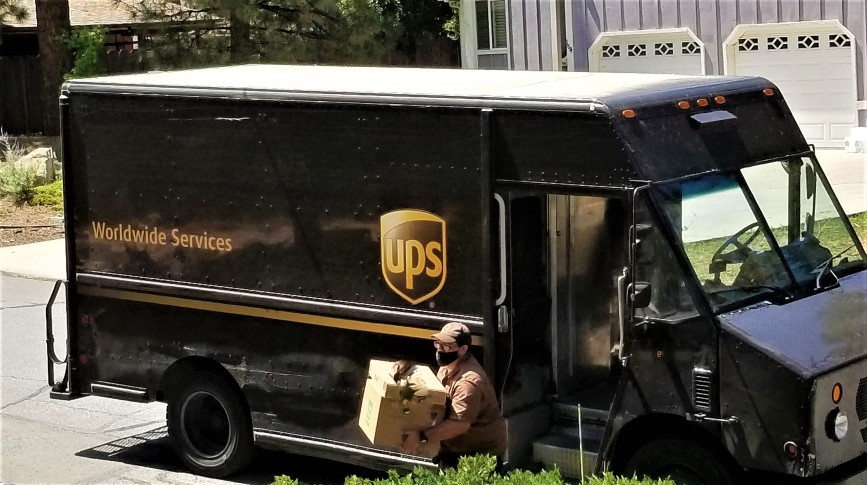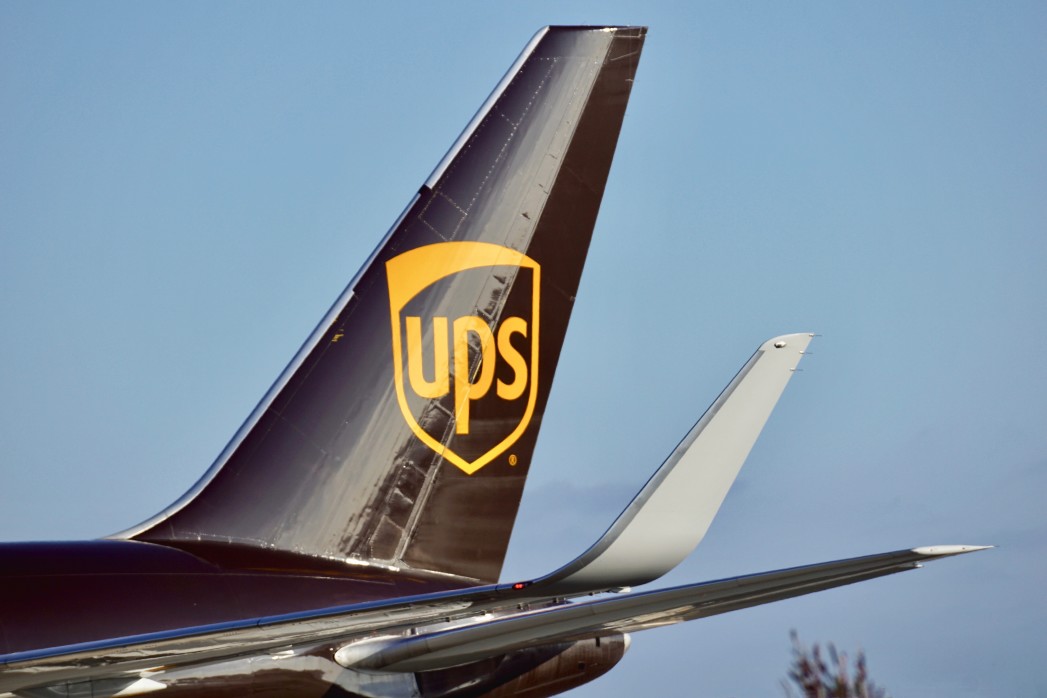A lot more goes into shipping frozen foods than most people realize. Not only do you have to make sure that the foods you are sending are actually frozen before they start their journey, but you have to make sure that the logistics that get those frozen foods from Point A to Point B are going to be able to keep them frozen every step of the way. In this detailed breakdown, we run through (almost) everything you need to know about how to ship frozen food effectively. Use the inside information in this guide to help you better plan for these kinds of shipments. By the time you finish up you’ll be able to confidently send frozen food through the mail (with multiple different shipping companies, no less) without headache or hassle. Let’s jump right in, shall we?

The Biggest Challenges You’ll Face Shipping Frozen Food
Right out of the gate, the first thing you have to understand about shipping frozen food is that there are a variety of unique challenges that you have to overcome. Shipping a book, for example, is a whole lot easier than sending a frozen prime rib. Extreme temperature swings, humidity changes, and travel delays aren’t going to have much of an impact on your book. With your frozen prime rib, however, anyone of those things can prove to be disastrous – and all three combined (which isn’t at all uncommon when shipping frozen foods) can ruin your food completely. Here are just a couple of things you need to keep in mind before you decide to send any frozen food through the mail.
Extreme Temperature Swings
Extreme temperatures are going to wreak havoc on your frozen food shipment. Obviously extreme high temperatures are going to threaten to melt or defrost the frozen food that you are sending through the mail, especially if it hasn’t been properly “buffered” against these kinds of temperatures. At the same time, though, extreme low temperatures can also destroy your frozen food. You might deal with a lot more freezer burn, a lot more dehydration, and a whole host of other problems that occur when your frozen food is dropped to really, really low temperatures.
Worse, your frozen food might go through a number of cycles between extremely high temperatures and extremely low temperatures. This is especially true if you are sending frozen food across country (or across the world). As soon as you start to bounce through different regions and into different climates the potential for these temperature swings to destroy your food along its journey skyrockets significantly.
Humidity
Humidity is always another problem that people have to consider when they want to figure out how to ship frozen food effectively. Humidity can cause spoilage but it can also contribute big time to freezer burn as well. All it takes is a lot of extra humidity being introduced into the same space that your frozen foods are. As soon as that humid air comes in contact with your frozen food it’s going to turn that into condensation, which is (almost always) going to go in one of two directions. You’re either going to end up with that condensation melting the frozen components of your food, bringing them up to (temperature). Or you’re going to deal with that condensation freezing on top of your frozen foods, causing problems that way, too. Humidity control is a major piece of the puzzle when learning how to ship frozen foods effectively.
Travel Delays
Finally, you need to plan for potential travel delays. Most shipping partners are going to do a really good job about getting their food deliveries to their ultimate destination as quickly as humanly possible. They don’t want any spoilage and they certainly don’t want an army of unhappy customers finding their frozen food delivery less than frozen when it hits their doorstep. At the same time, sometimes travel delays cannot be avoided. Perhaps equipment broke down. Perhaps inclement weather caused a travel delay. Perhaps there’s just a lot more traffic or a lot more road obstructions and accidents along a transit route, slowing down the delivery of frozen foods. This has to be anticipated. It’s always better to “over freeze” frozen food for transit so that it can survive through 24 hours (or more) of a delay without losing any of its freshness.
Tips for How to Ship Frozen Food Effectively
Now that we’ve covered a couple of the dangers and risks you have to account for when it comes to shipping frozen food let’s highlight a couple of tips that’ll help you send frozen food more effectively.
Preplan Your Shipment
As we highlighted a moment ago, preplanning (and timing) your frozen food shipment is absolutely essential. We’re not just talking about trying to figure out your average time of transit for your frozen food packages, either. That’s important, to be sure. You need to know how many days (on average) it’s going to take your frozen food to get from one location to another. What’s equally as important, though, is timing the pickup and delivery window for your frozen foods. You want to make sure that your packages are getting picked up when the refrigerated/freezer truck is running at full blast, with the climate and temperature inside that unit already stabilized. You also want to make sure that your packages are being delivered with someone there to receive them so that they can be moved from the climate controlled transportation directly to a stationary freezer system.
Use the Right Boxes and Containers
Your average cardboard box isn’t going to do all that much to buffer or insulate frozen foods from temperature swings or humidity. Sure, you could probably get away with sending frozen foods in a cardboard box if you’re only going across town (or maybe even a couple of towns over). But any further than that – any further than a same-day delivery – and you’re looking at a skyhigh potential for spoilage without the right boxes and containers. Instead choose boxes and containers specifically made to transport frozen foods. You want a lot of insulation. You want a lot of protection. And you want a lot of humidity and temperature control whenever possible. It’s also nice to have packages with easy to grip handles when you’re talking about transporting frozen food. Frozen food can be pretty heavy (and pretty chilly). Quality handles make moving those boxes around a lot easier.
Always Work with Reputable Companies
It’s critical that you work with reputable companies that know how to transport frozen foods as well. Pretty much every shipping company out there is going to promise that they can deliver frozen foods effectively. But only some of them have the infrastructure and the equipment (not to mention the training and the experience) to get the job done right. One of the biggest challenges you’ll have is choosing the right shipping partner to move forward with. We highlight some details below to help you out with that, though. Just know that it’s important to steer clear of fly-by-night operators that don’t have a lot of history shipping frozen foods.
Make Sure to Refrigerate or Freeze Food Prior to Shipping
This sounds like a bit of a no-brainer, but you’d be surprised to learn just how many people expect the freezer/refrigerated shipping container to handle the heavy lifting of refrigerating or freezing food as it goes along its journey. That’s a surefire recipe for spoilage, uneven freezing, and a bunch of other headaches that can be avoided completely by refrigerating or completely freezing food before it’s handed off to your shipping partner. With a shipping process as involved as transporting frozen food you want to have as much control over the finished results as possible. Make sure that you are handling the refrigerating or freezing before it gets into a shipping container for the best possible results when it gets delivered.
Ask Shipping Partners for Tips to Make the Process More Effective
It’s never a bad idea to talk to your shipping partners about tips, tricks, or insights they might have to help make the process a little more effective on your end. There may be certain things that shipping partners like to do when transporting frozen food that you can help them out with. This can go a long way towards not only getting your frozen foods delivered in the condition you are hoping they will, but it also helps to build a better relationship with your shipping partners, too. It’s never going to hurt to ask!

How to Pack Your Frozen Foods for Shipping
If you absolutely, positively need your food to arrive frozen you have to pack it effectively. For starters, your packaging absolutely needs to start with insulated Styrofoam boxes. These boxes are cost-effective, readily available, and do a great job at maintaining temperatures all while protecting frozen foods during transport. Dry ice boxes are also going to help you protect your frozen foods during transport as well. Dry ice also does a top tier job at keeping temperatures low while your boxes are moving across the state (or across the country). This material buffers against temperature swings in a big way, too.
The outer storage box should be heavy duty carboard. It needs to be designed to protect not just the frozen food inside the container but the foam insulation as well. If the foam insulation layer becomes compromised you’re going to be looking at major temperature control issues. It’s never a bad idea to use a bigger box than you think you need. That leaves a little bit of extra space for ice packs, more dry ice, or other temperature control solutions to be used as well.

How to Ship Frozen Food – Individual Shipping Service Specifics
USPS
The USPS will take frozen food shipments, but they aren’t designed to facilitate these kinds of shipments specifically. They don’t offer refrigerated or frozen transport as a specific service. If you want to send frozen food through the USPS, you’ll want to use plenty of dry ice. This is necessary to keep the temperatures low enough to keep your things frozen.
You’ll also want to make sure your container is 100% leak proof. It’s important to prevent leaks but you need to steer clear of air tight containers. Air tight containers will cause condensation to build up inside the container as well as carbon dioxide. You’ll end up melting your frozen food much faster. If you’re using dry ice your packaging needs to be labeled as Class 9 DOT as well. This lets USPS know that there are carbon dioxide materials onboard.
UPS
UPS does offer frozen food shipments as a specific service. They have a couple of recommendations they make to ensure the process goes as smoothly as possible, too. For one, UPS recommends that all frozen food shipments be sent out via expedited delivery services. Ideally something like Next Day Air, but within a 30 hour delivery window for sure. UPS also recommends that anyone sending frozen food use a plastic liner inside the package, secure the frozen food in another plastic bag, and use thick insulated containers to keep things as cold as can be.
FedEx
FedEx is another top tier shipping partner that offers frozen food delivery services. The FedEx Temp-Assure shipping method is recommended, providing a whole range of temperature controlled delivery options for customers large and small. US shipments should be sent with expedited services, services designed to deliver goods within 24 hours at the lastest. Insulated foam containers are recommended as well, with walls that are at least an inch and a half thick (or thicker, if possible). These containers should be placed inside of secure, sturdy, and safe cardboard or plastic boxes, too.

US Global Mail – The Ultimate Modern Mailbox Solution
If you’re looking for a way to modernize your mailbox there’s no one better than the folks at US Global Mail. For starters, every US Global Mail customer gets a private, secure, and safe street address they can use for all of their mailing needs. This is a permanent address, too – one that will stay the same no matter how often (or where) you might move. On top of that, every piece of mail sent to your US Global Mail virtual mailbox is scanned and uploaded to a digital dashboard in real time. This means you’ll get instant notifications about every piece of mail sent to you, complete with a picture or scan, so that you never have to wonder about what is (or isn’t) in your mail. Combine that with check deposit features, mail forwarding at 80% off of retail rates, and other benefits and it’s not hard to understand why so many choose this service. For more details, check out the US Global Mail site today.







